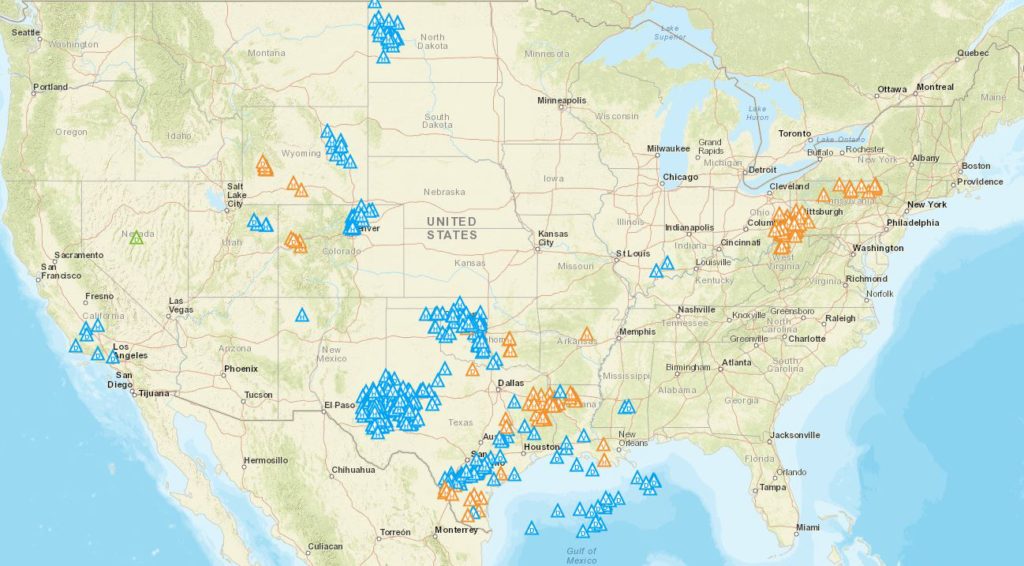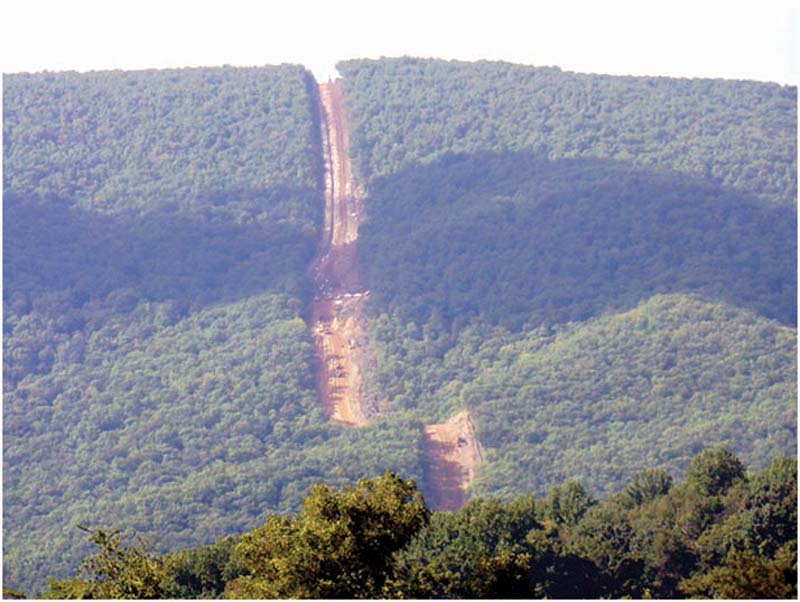Jan 4: Just like that, natural gas prices have dropped below $3.30/MMbtu. Upcoming weather is expected to be warmer than normal, so the market is responding. What the market seems to be forgetting is that natural gas production is still pretty low, and storage levels have been dropping more than expected. It will be interesting to see what happens in the next week or two.
Cheap natural gas has been driving a resurgence in American manufacturing.
High natural gas prices are good for my clients–mineral and royalty owners. One thing I’ve been concerned about lately is whether Trump’s policies are going to drive prices up, or drive prices down. I’ve thought about it a lot but I haven’t been able to figure it out. I’ve been thinking about whether coal might come back and challenge natural gas on price. This article argues that coal is not coming back. If that’s the case, my clients’ mineral and royalty rights will continue to be valuable.
This article comes from the American Petroleum Institute, so it’s probably at least a little slanted in favor of the oil and gas industry. There’s probably a counter-argument of some sort. Regardless, it says that the increased use of natural gas has lead to a reduction in carbon emissions related to electricity production. The last time carbon emissions from electricity production were this low was 25 years ago. Conclusion: natural gas is better for the environment than coal or oil.
Here’s some good speculation about the future of oil and gas prices. Like all speculation, it’s probably not entirely right, but it’s probably not entirely wrong either. It’s fun to read and think about.
This Forbers article is also some good speculation, but it’s more focused on natural gas and consequently, the American side of things. Enjoy with a good does of salt.
This article is good speculation too, but only regarding the next calendar year so it’s less likely to be completely inaccurate. It’s also a little more dense with industry and investment lingo, so it’s a little harder to read. Enjoy……if you want.
Since we’re speculating, we should include the EIA’s speculation. They are, after all, usually reasonably accurate. Of course, when you’re predicting a price of between $35/bbl and $93/bbl in December of 2017, it’s not too hard to be right. The good news is that oil and gas prices are expected to slightly increase. That’s far better than large movements in price either direction.
This interesting Bloomberg article says there is way more gasoline in the United States than we actually need. We’re exporting tons of the stuff. Oddly, prices at the pump have gone up here in Buckhannon in the last few weeks. Maybe they’ll go down in the next few weeks. Who knows? I’ve decided I have no idea how gasoline prices work. It’s not going to stop me from trying to figure it out though.
Magnum Hunter went through bankruptcy last year. The company has made a lot of important changes in the process. The only thing that our clients really need to know about is that the company is changing its name to Blue Ridge Mountain Resources. So if Magnum Hunter owns a lease you signed you will start to see correspondence from them under the new name. You would think that as a part of that process they would notify people, but oil and gas companies are notorious for not notifying lessors when changes happen. It’s nice to know who owns your lease. That’s one of the reasons we ask them to add a clause to leases which requires them to notify you if the entity responsible for the lease changes.
Turns out production is going up in the Marcellus/Utica region. Who’d a thunk it? Prices go up. Production goes up. My hope is that producers can keep their development in line so that they don’t push us into another unsustainable price bubble. The good news is that the number of DUCs (Drilled but UnCompleted wells) has gone down.
This Seeking Alpha article by HFI Research does the math and determines that we’re going to need some increased production and decreased demand this year for natural gas or we’ll end the year without enough gas in storage for the winter. That sounds like a recipe for higher prices and increased production. That means there will be more leasing, and more people calling us to help them understand what their lease says. We’re gearing up to help everybody we can.
This MarketWatch article deals with the question that a lot of people have regarding the oil markets this year: will U.S. shale oil be able to replace the cuts in production that OPEC has made? Their answer, no. Shale oil is expected to take too long to ramp up production, and even when it does the market should have already rebalanced. It’s hard for me to say whether that will be the case. I think we’ll just have to wait and see on that one.
Saudi Arabia says the current OPEC production cut isn’t going to last. It’s intended to be a six month deal, and won’t be extended. Since a lot of the cut was production that was unsustainable, according to some sources, this may just mean that OPEC countries will slowly bring new production online once the deal has expired. Interestingly, Saudi Arabia is said to have cut more than what they agreed to, and says that other countries have done the same.
Jan 18, 2017: Prices since the beginning of the year have been as low as $3.09 and as high as $3.50. It’s been volatile. Warm weather coming up will probably drive prices down again, but the outlook for the year is that prices will remain above $3.00/MMbtu and may push into the $4.00 range a little at times.
 If you know where your minerals are located and you’re wondering whether there’s a drilling rig on or near your minerals, this web site is the place to go.
If you know where your minerals are located and you’re wondering whether there’s a drilling rig on or near your minerals, this web site is the place to go.
